HAND AXIS: History, Functions, Characteristics
Loading...
The hand ax is one of the relics of the stone age. The function of this hand ax is not widely known, especially by people who do not understand history. But we can still learn it from now on to take advantage of it.
This tool is made of a stone that is almost the same as an ax. As is known, the life of ancient humans at that time was still largely supported by tools made of stone. One of the remains is an ax of this type. Many people are already familiar with this tool.
List of contents
A brief History
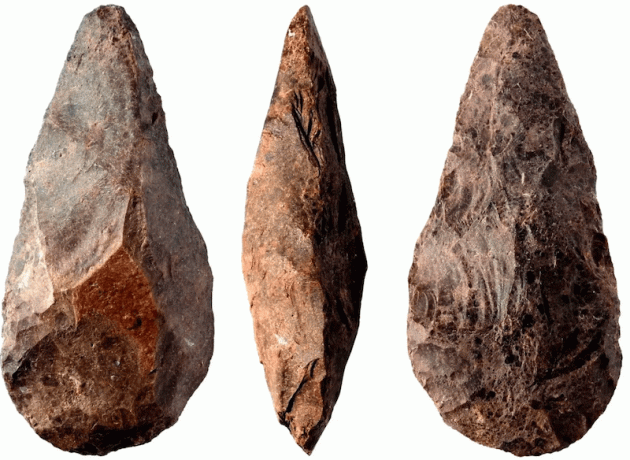
As has been explained a little above, that hand ax includes historical objects that have existed since the old stone age or the paleolithic era. The Old Stone Age or Paleolithic Age is generally referred to as the longest prehistoric era of mankind.
Based on historical records, this era existed around 3.3 million years ago to 11,650 years ago. Many prehistoric objects have been found and exist today. One of the historical objects that is quite famous today and has been found is this type of ax.
This tool is given such a name not without definite reasons and reasons. It is so named because the way to use this tool is to grip it by hand. However, this ax does not have a special handle for the hand to grip.
This ax is also included in the variation of the forage ax. This ax is also a historical object that existed in the stone age and is an object that has an important role in human survival in the stone age at that time.
According to historical records, this type of ax began to be used from the hunting period to the advanced gathering period.
Read: Ax of Slayer
Hand Ax Making
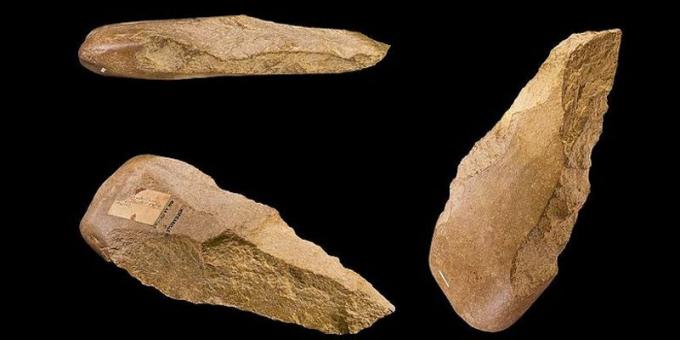
If you've ever read about the history of the forage ax in detail and thoroughly, and have also read about the method of making a perimbas ax, maybe the way of making a hand ax can be estimated by itself.
The impact ax is made by sharpening one side while the other two sides are made not sharp because it will be used as a knife the handle or it can be said that the impact ax only has one sharp eye, it will be almost the same as the way of making a hand ax this.
This ax has a slightly long shape and is tapered at the top. The sharpness of this ax is done by shaving the sheer at the top to the side of the stone. On the handle of this ax there is still a stone skin or it is deliberately not made sharp.
This type of ax is a fairly modern type of perimbas ax. This ax is made of purified limestone or other types of stone made in various simple ways so that it becomes an oval or pointed shape on one side.
Most of these axes are still made in a rough way, such as making axes of perimbas. However. Not a few of these axes are also made to be oval in shape with a smoother texture and a more regular and detailed surface.
Hand Ax Shape
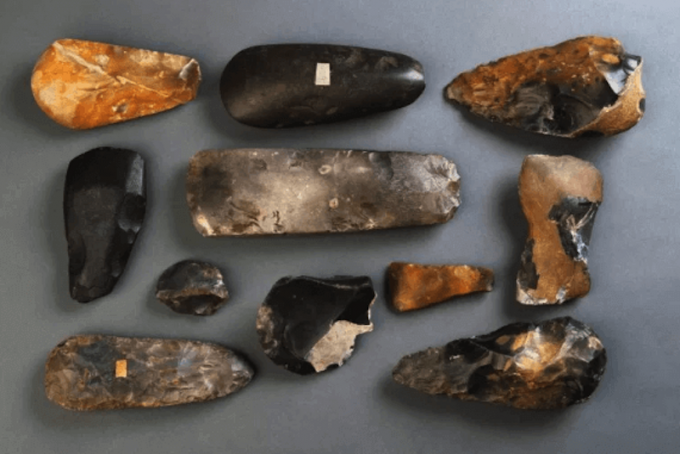
This type of ax is made according to the intended purpose and function at the place of manufacture. Usually, there are several things that prove the tool is still included in this type of ax,
Although found in different shapes and in different places, all axes of this type are usually found in similar layers. Below are the forms:
1. General Shape Grip Ax
As previously informed, this type of ax is a different variation of the axe invaders and are found in several different forms of axes, according to the place where it is found.
These axes have different shapes from each other. The general form of this ax is quite similar or similar to the shape of the forester ax, namely wearing a Core stone made sharp and sharpened on one side accompanied by a beating ax on the second his side.
The stone skin on the ax of this general form is still left or is still on the surface which aims to make it easier for the user to hold or grip.
This common form ax is one of the most common types of hand axes found compared to other forms of axes.
2. Hand Ax with Refined Shape
In addition to the general form of axes, there are also forms of axes, which are then hand-held axes made by grinding.
This smoothed form of the ax is the second form of the ax which is made in more detail. This second form of ax is a common form of ax and has been processed to obtain an ax with an even smoother surface.
These grinded axes are quite commonly found in the Baksoso Valley area or west of Pacitan and Tabuhan, also commonly found in East Java. This type of ax has a shape that is almost similar to the level of the Acheulean culture.
3. Intricate Hand Ax Shape
In addition to the general shape and the smoothed form, the third form of the ax is a complicated one. Just as the name suggests, many people think the level of difficulty in making this type of ax is complicated.
That's true, judging from the manufacturing process, this third type of ax or this complicated ax has a manufacturing process that is more detailed and more difficult than making an ax in the form of a other.
This type of complex-shaped ax can be made by smoothing the ax repeatedly and more thoroughly and also more complicatedly until the manufacturing process is complete.
For example, the type of ax found in the Sumatra area. The ax found there was made with a very pointed shape. So this complex ax is usually considered a fairly large flake tool.
Read: Examples of Metamorphic Rocks
Hand Ax Progress
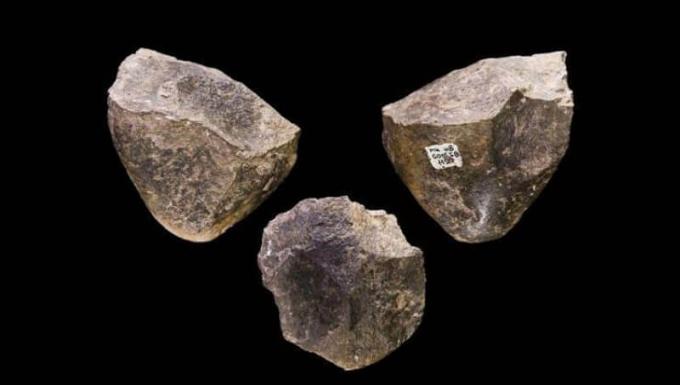
Advertisement
The distribution of this type of ax is wide enough to reach China. According to information from experts, there is a lot of evidence to show that this ax is actually a cultural heritage from Trinil, Pacitan. This culture is one of the relics of the Middle Pleistocene era.
This ax was discovered in 1935 by Von Koenighswald in Pacitan, East Java. In Sumatra, this kind of culture was first discovered in the coastal areas of North Sumatra, more so precisely in the Lhokseumawe and Binjai areas which are well known as Sumatralith or Batu Sumatra.
In addition to these two areas, this ax is also found in various other areas such as in Parigi (East Java), Flores, Nusa Tenggara, Terunyan (Bali), Lahat (South Sumatra), Awangbangkal (Kalimantan), Kalianda (Lampung), Sawah Mine (Maluku), Jampang Kulon, and Peninsular Malacca.
There was research and excavation carried out by a team from Indonesia-France in 1990 and found ax artifacts in the Thousand Mountains area.
Because of this, it is estimated that the Thousand Mountains is one of the areas with the most use of axes. The research informs that this ax was used by early humans, namely the early humans of the Homo sapiens type.
Hand Ax Function
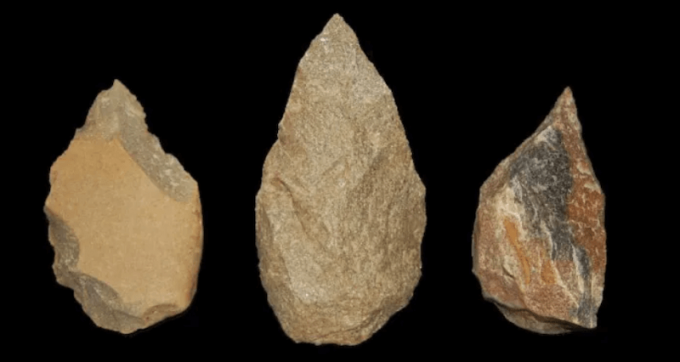
Historians actually have not been able to reach an agreement to ascertain what the true function of this type of ax is.
But in general it can be estimated or known that this type of ax is used for cutting or as an important tool to assist various activities carried out by humans in the stone age old.
Well, below are some of the functions of this type of ax in more detail:
1. Multifunctional Use
The main function of this ax is as a multifunctional tool. That is, this ax was used by ancient humans for various purposes. Not only used for cutting, this ax is also used for hammering, digging, piercing and others.
The shape of this ax can usually be grasped directly with the hand so that its users think broadly. This ax can not only be used as a cutting tool, but can also be used for various other useful activities.
2. Used for Cutting
Knives for self-cutting are now available with various shapes and different uses. The ancients used this ax as a cutting tool. It is also an explanation of the multifunctional meaning of the ax above.
3. Used For Grinding Grains
This type of ax is also used as a tool for pounding. The material or object that is ground here is usually a kind of grain that can be taken advantage of. This hard ax will make it easier for ancient humans to smooth any material.
4. Used for Shale Tools
The next function of this type of ax apart from being a multifunctional tool that can be used for cutting, hammering, piercing, digging, and so on, this tool can also be used as a flake tool.
Seen from the development of this tool in ancient times, it is estimated that this ax has other functions besides Some of the functions that have been mentioned above are as a tool that produces flakes as well as tools other.
This can mean if this type of ax is used to make other types of equipment, which can make activities easier humans in the old stone age, so that new useful tools can be produced with the help of similar tools this.
5. Used as a Throwing Weapon When Hunting
The next function of this ax was also used to facilitate animal hunting activities in the stone age. Humans in the stone age could eat animal meat by hunting in the forest using this tool.
They will use the help of this ax to get their prey. There are also those who argue that this ax was used as a throwing weapon or a kind of missile for animal hunting activities.
This could be due to the presence of several ax artifacts with the same shape but larger so difficult to grip and it looks like the object is used as a weapon to throw animals when hunt.
However, no evidence has yet been found to support this theory. It is also estimated that at that time there was already a javelin or also called an arrow which was easier to use than this type of ax.
6. Used for Skill and Practical
This type of ax has a variety of forms and is usually used as an object for practical skills.
There are sizes that are too big and those that are too small for the size of an axe. There are even some of these axes that are made with a high level of skill and require precision and must also pay attention to the design and symmetry of the axe.
Although it is still believed that this object was used because of its practical function, it is possible that this historic tool could be used in various other useful purposes.
Read: Prehistoric Age
Distribution and Use
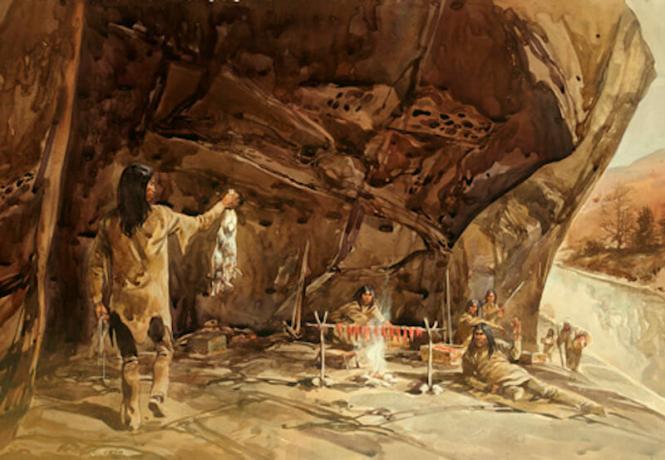
Humans who use this type of ax are thought to have come from the middle Pelistocene around 1.8 million years ago up to 11,500 million years ago, namely during the Paleolithic era and also still continuing at the beginning of the Neolithic era.
As with the first sawing ax found in Pacitan, East Java, the discovery of this ax is also almost similar to that of the pioneer ax. In more detail about the distribution of the use of this ax, it will be explained further as below;
1. Ancient Human Culture
Judging from the results of investigations carried out by experts, it was found evidence that this type of ax came from the Trinil cultural layer in Pacitan, East Java. This culture is a relic of the Middle Pleistocene.
In addition to being in the Pacitan area, similar fossils were also found in Peking, China, this ax artifact was also found in the Thousand Mountains. So it is estimated, the Thousand Mountains is one of the areas where this ax was used earlier.
2. Ancient Human User
According to archaeological discoveries in Pacitan, Peking and the Thousand Mountains, it can be concluded that the impact ax was used by three people types of ancient humans, namely Sinanthropus Pekinensis (Peking), Pithecanthropus Erectus (Pacitan), and Homo sapiens (Mountains). One thousand).
The Most Found Hand Axes
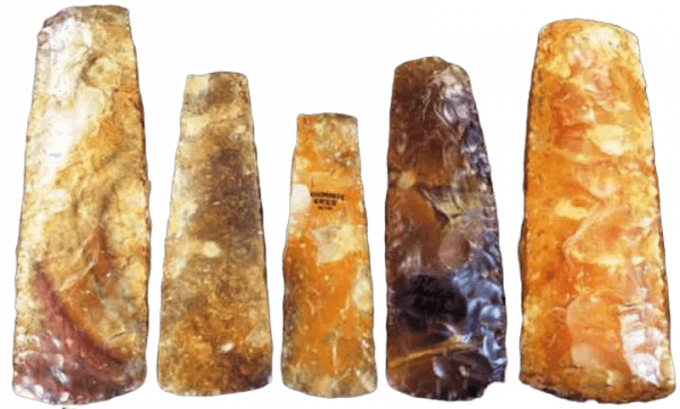
The most famous type of ax in Indonesia is called the Sumatran hand ax. It is named like this because it was first discovered in Sumatra.
This type of ax has a characteristic that it is made using krakal stone whose tip has been trimmed horizontally and is elongated on one side only.
Although initially this type of ax was found in Sumatra, it was also found that this type of ax had a similar shape and had similarities in other places.
Some places where an ax with a shape similar to this type of ax is found, such as Malaysia, Australia, South China, Laos, Cambodia, Thailand, Tasmania and Vietnam. In Indonesia, it is also found in the coastal areas of North Sumatra, Niah Cave, Kalimantan, and in Binjai Tamiang.
The Difference Between a Sweeping Ax and a Hand Ax
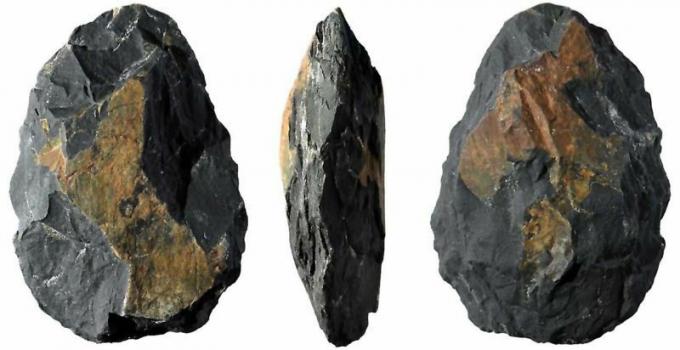
This type of ax has a different shape from the forage ax. Both are two different types of axes, even different in shape. Below are the different shapes of the axes:
1. Hand Ax Shape
This type of ax has an elongated shape and one part of this ax is deliberately sharpened. While one of the other parts of the ax is left alone, this aims to make the ax easier to grip.
2. The Shape of the Ax of Severity
While the shape of the impact ax is like a rectangle or square. On the other hand, the ax is deliberately sharpened with a very sharp shape. The sharpness of this ax depends on the sheer flaking of the surface down to the edge of the rock.
Well above is an explanation of the hand ax that has existed since the stone age. As Indonesian people, we must also understand the history and function of this type of ax.
X CLOSE
Advertisements
ADVERTISEMENT
X CLOSE
